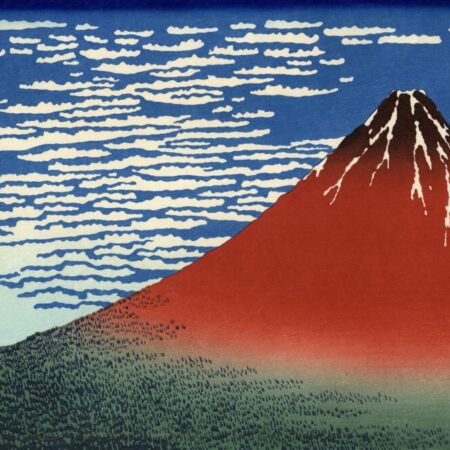Have you ever seen Ukiyo-e? The vividly depicted landscapes and people of Japan. Despite Japan's limited interaction with other countries at the time, these beautiful paintings gained popularity worldwide. This article will introduce what Ukiyo-e was, including its origins.
What is Ukiyo-e?
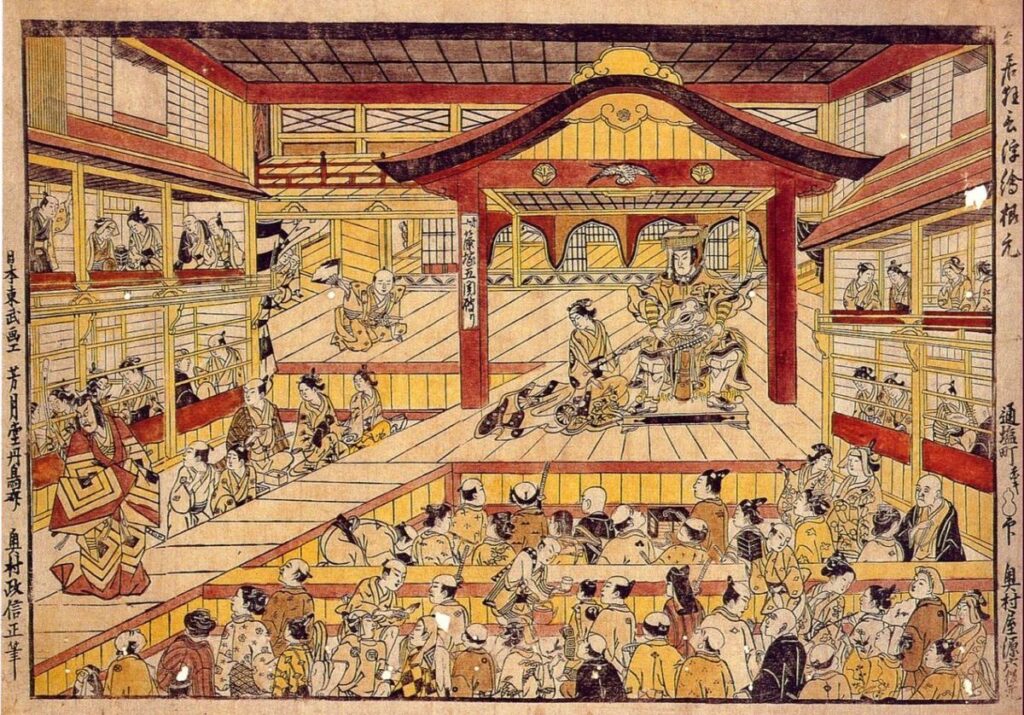
Ukiyo-e is a genre of woodblock prints and paintings that flourished in Japan during the Edo Period (1603-1868). It reflects the culture and entertainment of the common people, depicting everyday life, kabuki actors, beauties, and landscapes. Ukiyo-e is characterized by its bright and vivid colors, sophisticated line drawings, and often bold compositions.
The term "Ukiyo" originally meant a harsh world filled with suffering, written as "憂世". However, as the Edo Period brought peace and reduced conflicts, people started living their days more cheerfully, leading to the term being written as "浮世", suggesting a light-hearted approach to life.
After being introduced to the West in the late 19th century, Ukiyo-e influenced Western artists of the Impressionist and Post-Impressionist movements, significantly impacting international art movements. Even today, Ukiyo-e is highly regarded worldwide as an important symbol of Japanese culture.
(Image citation: wikipedia)
The History of Ukiyo-e
Now, let's delve into the history of Ukiyo-e.
The Origins of Ukiyo-e in the 17th Century
Ukiyo-e originated in the early 17th century, initially dominated by monochrome ink paintings and simple drawings, but gradually evolving into the more colorful nishiki-e (brocade pictures). With a peaceful backdrop and the rise of the merchant and artisan classes in Edo (modern-day Tokyo), Ukiyo-e became popular among the townspeople. Hishikawa Moronobu is credited with establishing the Ukiyo-e style, featuring portraits of beauties and kabuki actors.
Beauties and Nishiki-e Become Mainstream
Hishikawa Moronobu played a significant role in the early days of Ukiyo-e, focusing on beauties and establishing this genre. Actor prints also flourished during this period, capitalizing on the popularity of kabuki actors, who were frequently depicted in Ukiyo-e.
The 18th century saw advancements in multi-colored printing techniques, leading to the emergence of nishiki-e. Previously, Ukiyo-e was primarily monochrome, but Suzuki Harunobu introduced vibrant polychrome nishiki-e, marking a significant evolution in the art form.
Ukiyo-e as a Unique Advertising Medium
In Edo-period Japan, Ukiyo-e served not only as an art form but also as a unique advertising medium. As the urban culture developed, Ukiyo-e was used to promote various products and services. Many Ukiyo-e featured portraits of kabuki actors, essentially acting as advertisements for their performances. The affordability and mass production capabilities of Ukiyo-e made it an effective medium for reaching a wide audience.
The rise of the merchant and artisan classes, along with the peaceful societal conditions of the Edo Period, contributed to the economic empowerment of the urban population, fostering a consumer culture where Ukiyo-e played a significant role as a marketing tool.
Landscape Prints Dominate the 19th Century
In the 19th century, landscape prints emerged as a new major genre within Ukiyo-e. Works such as Katsushika Hokusai's "Thirty-Six Views of Mount Fuji" and Utagawa Hiroshige's "Fifty-Three Stations of the Tokaido" captured the beauty of Japanese nature and scenery, gaining immense popularity.
These vivid, full-color landscape prints allowed people to see the famous places they had only imagined through monochrome illustrations, contributing to their widespread appeal.
Ukiyo-e Goes Global
The arrival of Commodore Matthew Perry in 1853 marked the end of Japan's isolationist policies, leading to the start of trade between Japan and Western countries. Japan's participation in international exhibitions, such as the Paris Exposition of 1867, showcased Japanese culture and art, including Ukiyo-e, to a global audience.
In the 1860s and 1870s, the influence of Ukiyo-e sparked a trend of Japonism in France, particularly among artists. The fascination with Japanese art, especially Ukiyo-e, grew, influencing Impressionist artists like Edgar Degas and Claude Monet, and Post-Impressionists such as Vincent van Gogh. These Western artists were captivated by the composition, color, and techniques of Ukiyo-e, incorporating these elements into their own works.
Famous Ukiyo-e Works
In this section, we will introduce some famous Ukiyo-e artworks.
Katsushika Hokusai's "The Great Wave off Kanagawa"
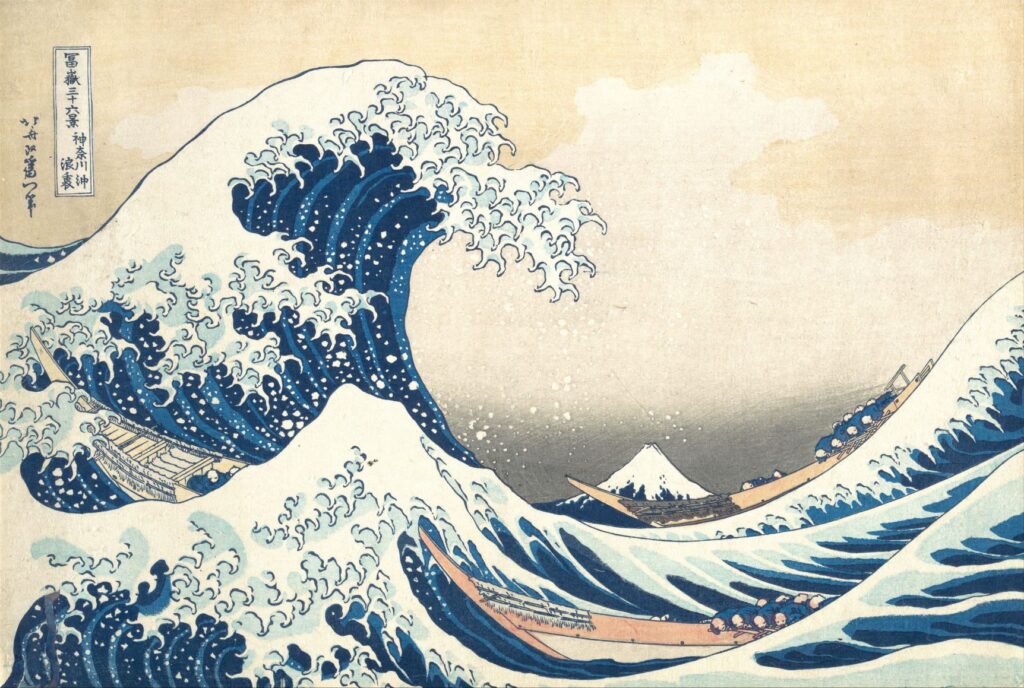
"The Great Wave off Kanagawa" by Katsushika Hokusai is a masterpiece from the late Edo period, part of the series "Thirty-six Views of Mount Fuji" which depicts Mount Fuji from various angles and seasons. This particular piece is especially famous for its portrayal of a gigantic wave with small boats in the foreground and Mount Fuji in the distance, creating a striking contrast.
(Image citation:和樂Web)
Hishikawa Moronobu's "Beauty Looking Back"
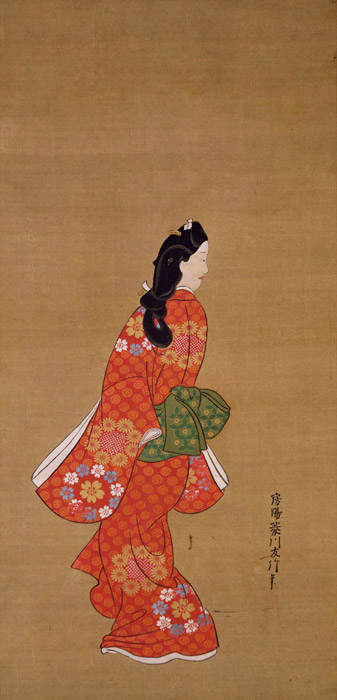
Hishikawa Moronobu is known as the first person to create Ukiyo-e and is often called the "Founder of Ukiyo-e." The artwork shown is one of his famous works, "Beauty Looking Back," depicting a woman in a red kimono looking back over her shoulder. Moronobu's portraits of beautiful women were so popular that they were said to epitomize the women of Edo, elevating his fame. This piece is characterized by its unique composition and color scheme, with the looking-back pose becoming symbolic of feminine beauty. The artwork was even used for a postage stamp in 1948, showcasing its wide-reaching influence.
(Image citation: Japan Wonder Travel Blog)
Utagawa Hiroshige's "Fifty-three Stations of the Tōkaidō"
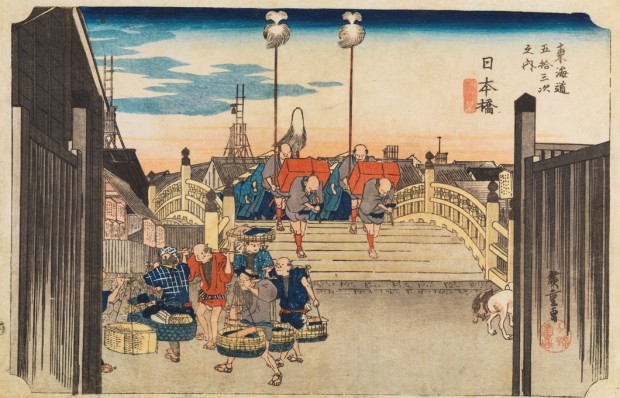
"Fifty-three Stations of the Tōkaidō" by Utagawa Hiroshige is a series depicting the landscapes of various stations along the Tōkaidō road. Among this series, "Morning View of Nihonbashi" is famous for its depiction of a daimyo procession crossing the Nihonbashi bridge against the backdrop of dawn. The perspective, as if peeking through the open large gates, along with the vertical and horizontal lines of the gates and bridge planks, add rhythm to the scene and create a solid composition.
(Image citation: 和樂Web)
Tōshūsai Sharaku's "Ōtani Oniji III as Yakko Edobei"
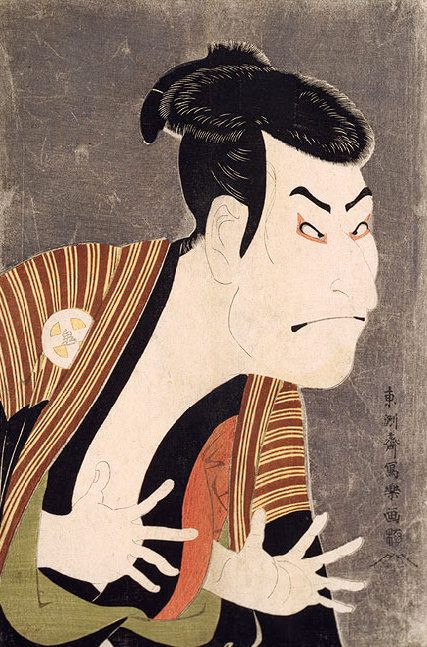
Tōshūsai Sharaku is known for his actor portraits from the late Edo period, with this particular artwork being one of the world's most famous Ukiyo-e pieces, recognizable to many. Sharaku's works, with their unique style and intense expressiveness, left a strong impression on the people of his time, sparking controversy in Edo. His exaggerated emphasis on actors' facial features diverged from the people's expectations of beauty, leading to mixed reactions.
(Image citation: Japan Wonder Travel Blog)
Utagawa Kunisada's "Gorozō at the Imperial Palace, Fourth Ichikawa Kōdanji"
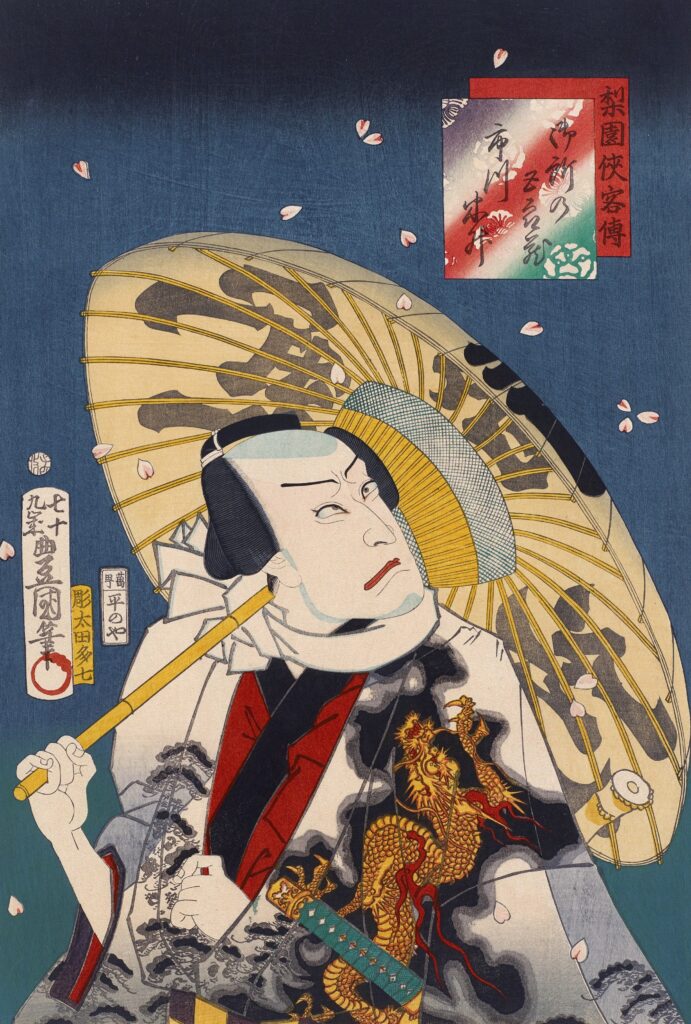
Utagawa Kunisada's actor portraits are known for their bold depiction of expressions and poses, highlighting the characters' features. The careful detailing of kimono and family crests captures the inner charm of the actors. "Gorozō at the Imperial Palace, Fourth Ichikawa Kōdanji" specifically portrays the kabuki actor Ichikawa Kodanji IV, showcasing his distinct personality and acting prowess.
How Ukiyo-e Was Made
Now, let's briefly introduce how Ukiyo-e was created.
Planning by the Publisher
Publishers, akin to modern-day producers, decided the overall composition and image of the Ukiyo-e. They needed to be aware of popular trends, people's demands, and also possess negotiation skills to engage talented artists.
Design by the Artist
Once the overall plan was set, artists began the actual design work. They created monochrome drafts using black ink, which were then reviewed multiple times with the publisher to finalize the base design.
After the base design was completed, colors were decided. Artists also oversaw the coloring process during printing.
Woodblock Creation by the Carver
Carvers, known as "carvers," created woodblocks based on the artist's final draft. The quality of the carving significantly influenced the texture and color gradation in the final Ukiyo-e. Even the delicate textures like hair and vibrant sky gradients were dependent on the carver's skill.
Carvers first created a key block, followed by separate blocks for each color used. The number of color blocks could vary greatly depending on the complexity of the design.
Printing by the Printer
Finally, printers, or "printers," transferred the designs from the woodblocks to paper. They began with the key block and then applied each color block. To prevent paper warping, they lightly moistened the paper before printing and ensured it dried flat.
Printers also had to be mindful of the marketability of the prints, sometimes producing as many as 200 copies if they anticipated high demand.
Summary
We hope you found this overview of Ukiyo-e's history, famous works, and creation process enlightening. The ability to produce such vivid and beautiful artwork without modern printing technology is a testament to the skill of Japanese craftsmen. Each Ukiyo-e carries its own story and historical context, which we couldn't fully cover in this article. If you're interested, we encourage you to explore more about Ukiyo-e in our other articles!



